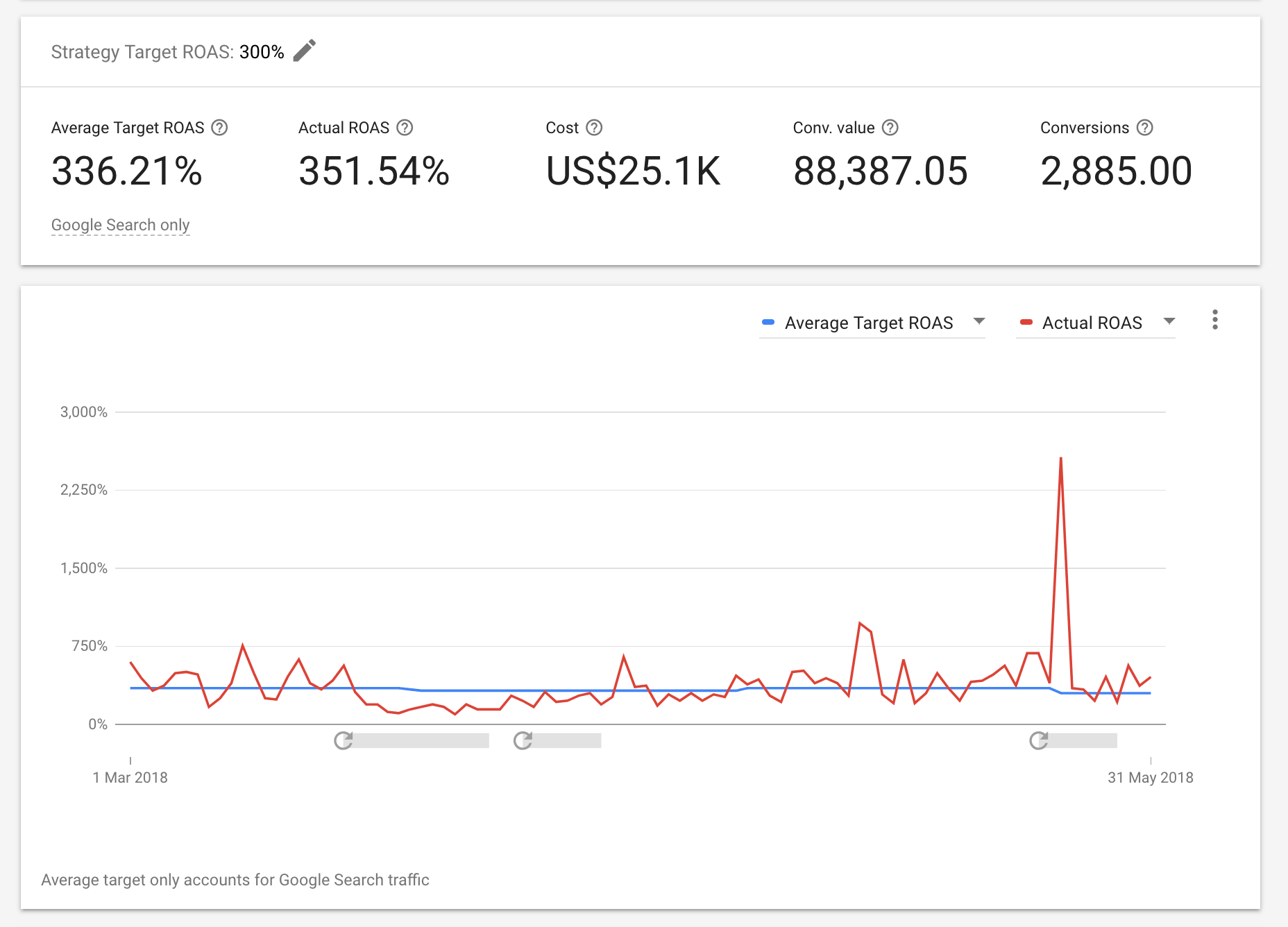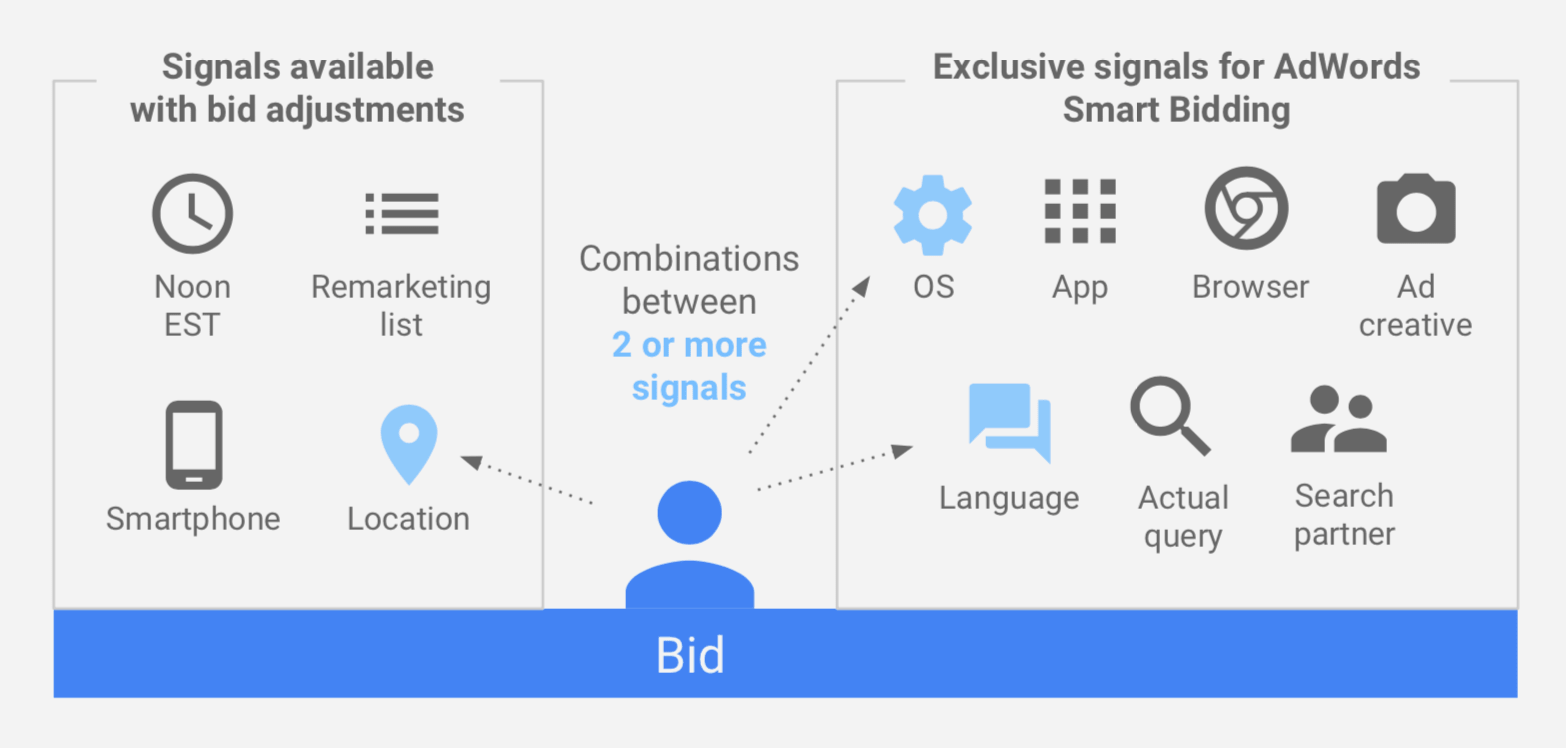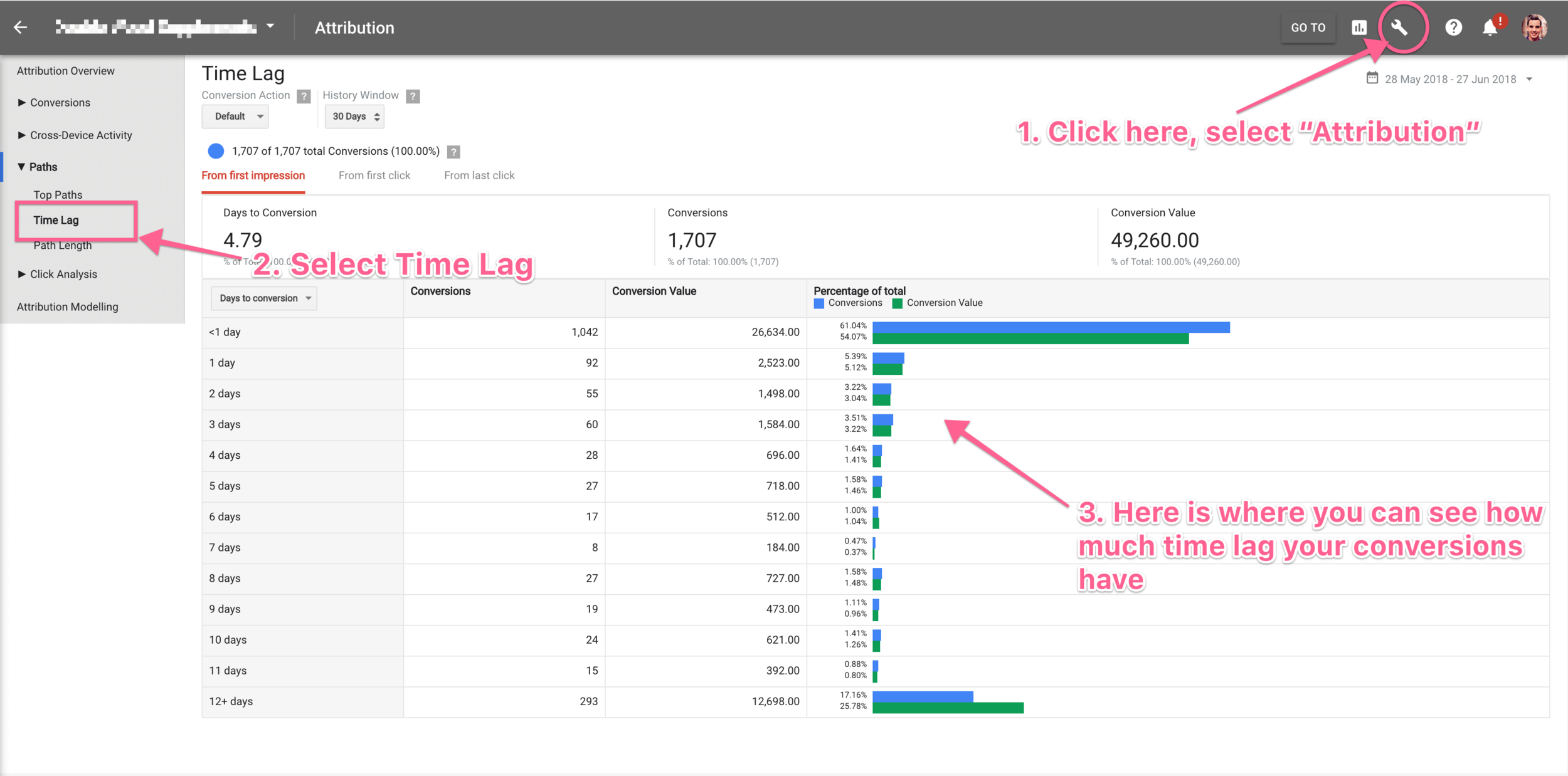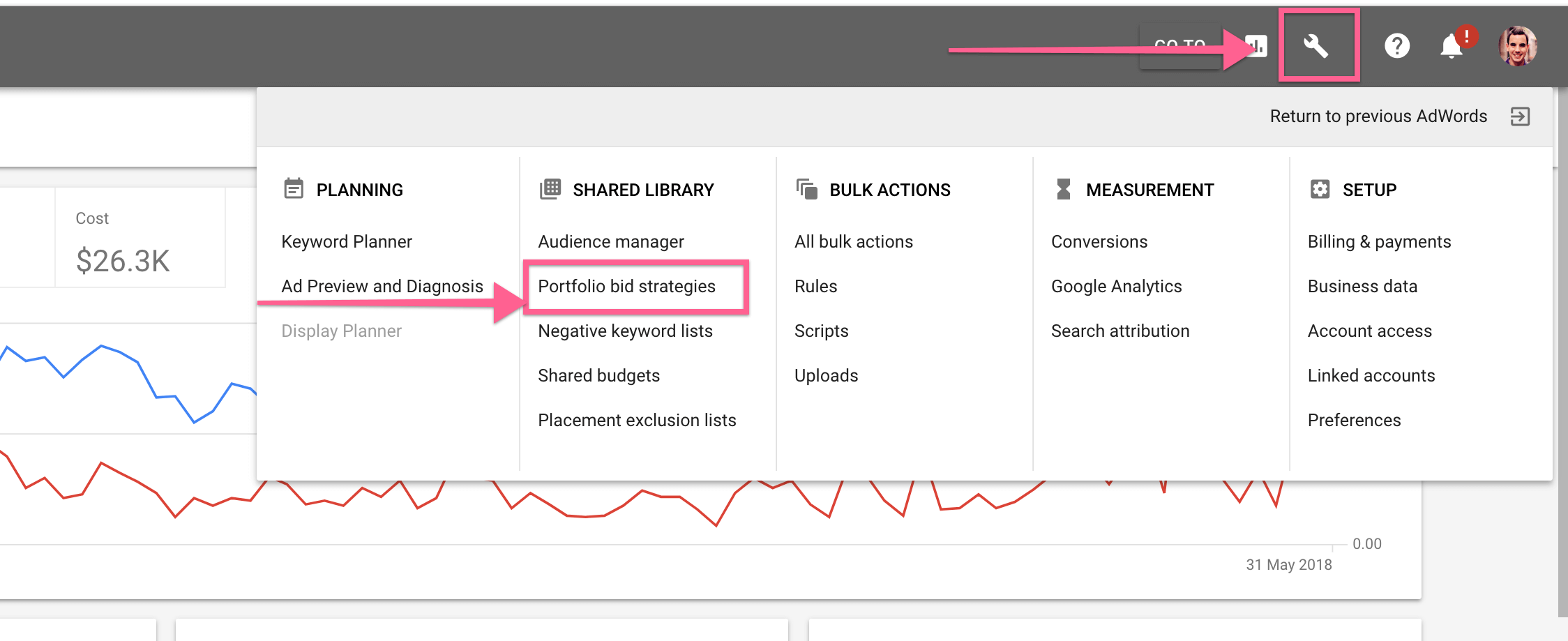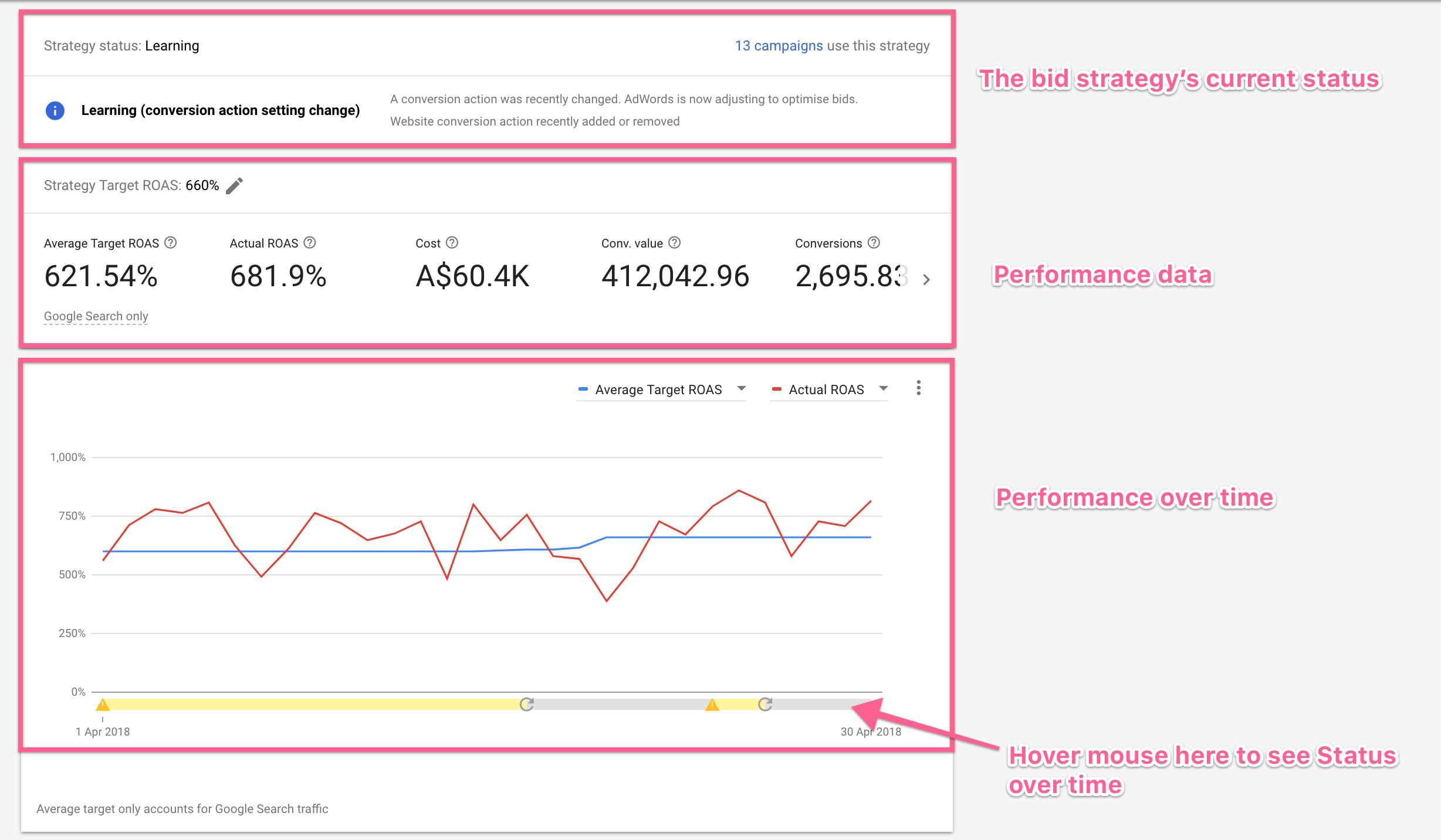Google's automated bidding feature has been a hot topic in the PPC industry, especially in the past 6-12 months. A lot of PPC pros are convinced it does not work, and they have the experience to prove it. But, the thing is, Google's automated bidding is a technology that is continually improving. A lot of said PPC pros might have tried it ages ago, found it didn't work, then binned it and assumed it'd never work for them. Still others might have tried it recently, but might have used the wrong assumptions/setup and then blamed the algorithm for the failing results, instead of learning how to set it up right. So, this article is going to be all about how to do just that - how to set up Google's automated CPA/ROAS based bidding so that it actually works.
In 2016 Google released an upgrade to their bid algorithm with the snazzy name of "Smart Bidding". While we already had Target CPA and Target ROAS bid automation available through the Adwords interface, now Google was baking in their vast experience in machine learning and AI, leveraging their Google Deep Mind platform, to deliver even better results than before. Ever since then, in my opinion, knowing how to properly use Smart Bidding has been an essential component of running high-performing Adwords campaigns.
I'm not going to pretend Smart Bidding is a cure-all and should be used for every PPC campaign and for every advertiser. Sometimes it doesn't work, even when you set it up right, and for those times you need to use something else. But, to give you an idea of how often it works, of the accounts my team and I manage, currently ALL of them bar 1 is working profitably and healthily on Target ROAS / CPA Smart Bidding. Furthermore, when we take on new client accounts and install Smart Bidding into an account that was previously using manual CPC, 9 out of 10 times we see an improvement in performance within the coming weeks as a direct result.
Have I whetted your appetite to learn how to do Smart Bidding the RIGHT way yet? Good! Here's exactly how to do just that...
What is Google's Target CPA / ROAS Smart Bidding?
If we are going to truly understand how to use Smart Bidding best, then we need to be clear on what it is, how it works, what it can do, and what it can't.
Smart Bidding is the name that Google now gives to its collection of automated bidding algorithms that help you to set CPC bids for your Adwords campaigns based on the conversion goals you give it. Instead of having to think about your account goals and KPIs, such as "reach a Return Over Ad Spend (ROAS) of 300%", and then manually translate those goals into CPC bid changes ("oh this keyword is below my ROAS target, let's decrease its bid by X%"), you can now just give plug that ROAS goal directly into the interface and let the algorithm decide on the best CPC bids to reach that goal.
There are a few different Smart Bidding types you can use: Enhanced CPC, Maximise Conversions, Target CPA and Target ROAS. Most Adwords accounts are usually being run with a CPA or a ROAS goal in mind, so for the purpose of this article we will be talking about Target CPA and Target ROAS only. In fact, for the rest of the article, when I say "Smart Bidding" I will exclusively be talking about the Target ROAS and Target CPA options.
Does It Work? Should I Use It?
Put simply, yes and yes - given certain conditions. If the conditions are right, Target CPA and Target ROAS will probably work for you, and by "work" I mean that they will deliver the CPA or the ROAS you asked it for and save you so much time that would otherwise have been spent manually applying bid changes.
Here's an example of the Target ROAS strategy we have running in one of our Ecommerce accounts:
The Average Target ROAS has been 336%. Actually we have mostly been aiming for a ROAS of 300% in this particular account, however we have in the past aimed at different levels such as 350%. The "Average" target we have aimed for over this period has thus been 336%. The Actual ROAS, the result that the algorithm actually delivered for us over this time, was 351.54%, it's comfortably over-delivered on our target. The best part is, we spent a fraction of the time managing the bids for this account, that time was instead spent doing creative things that machines can't do (yet!) like strategy, working on account growth, and crafting high CTR ad copy.
As I mentioned before, in our own patch of accounts here at Big Flare, the above results are the norm. We use Target ROAS or Target CAP Smart Bidding on almost every single one of our accounts and in every case the results are like they are above.
I did say above though, that you need certain conditions for bid strategies to work properly. I'll talk about that further in the below section "What You Need To Know". We do have one account where Smart Bidding didn't work and that's because it didn't meet some of the conditions it requires. So you definitely need to understand those conditions and caveats before you get started.
Benefits of Smart Bidding
Effective. Smart Bidding works, it's effective, given the right conditions it will deliver on the goals you set it.
Time-Saving. Depending on the size of the Adwords account you are managing, manual bid optimisation can take hours. To top it off, bid optimisation is not a "set and forget" type task. It needs to be done regularly, at least weekly, so you are potentially spending hours every week on bid optimisation when doing it manually. That time is effectively reduced to 0 with Smart Bidding.
Focus on what matters. By saving all that time on weekly bid optimisation, you have more time to focus on things that really matter and that machines can't do for you, like account strategy and growth.
Easy. Smart Bidding is easy to set up and manage. Manual bid optimisation takes years to master and is prone to human error and bias.
Auction-Time Bidding. At the very most, a human bid optimiser could optimise bids maybe once or twice per day. With Auction Time Bidding, Smart Bidding actually optimises bids in real-time. This means that every time an individual ad is shown, the ideal CPC bid is calculated at that precise moment, based on the data Google has available (which is a lot!).
Rich User Signals. This is Google-speak for "Google uses a metric crap-tonne of data to help decide the ideal CPC bid". A lot of this data is stuff that a human bid optimiser would never have access to. The below is an example of just some of the data signals Google uses when calculating the bid:
What's more, with Smart Bidding, unique combinations of 2 or more signals can be used at each and every ad auction. With manual bidding, you set one bid adjustment, and that's it for the whole campaign or ad group. For example, you set a mobile device bid adjustment of, say, -40%, so ALL your bids are now 40% lower on mobile (all other things being equal). One of the huge benefits of Smart Bidding is its ability to create unique signal combinations, meaning that if someone at, say, 12pm on a Tuesday is 10% more likely to convert on a mobile than a desktop, that can be reflected in the bid. If at 1pm that same Tuesday they become 10% less likely to convert on a mobile vs desktop, this too can be reflected in the bid when using Smart Bidding. You just don't get that level of granularity with manual bid adjustments.
What You Need To Know
As I've mentioned a couple of times now, Smart Bidding works well given certain conditions. Also, you need some background understanding about a few of the elements of the way it works if you want to use it properly. So here are the conditions and things you need to know to optimise it effectively.
You Need Lots Of Conversions
When it comes to conversion volume, the more the merrier. Target CPA and Target ROAS need conversion data to work, and the more they have the better the optimisation. Google's minimum recommended thresholds are at least 30 conversions in 30 days for Target CPA, and at least 100 conversions in 30 days for Target ROAS to work well.
You can still try Smart Bidding below these thresholds. I've seen Target ROAS work well on accounts with only 50 conversions per month. But, underneath the above conversion thresholds, it is less likely to work and should be approached with more caution.
In a lot of the language in Google's support documentation, they talk about conversion thresholds on a per campaign basis. However, you can also set up bid strategy portfolios that group multiple campaigns into one big group. This way, conversion data can be shared across campaigns (exactly the same way conversion data is shared across ad groups within the same campaign when you apply a Smart Bidding strategy at the campaign level). This mitigates the problem of not having enough conversions in a given campaign. If you have 3 campaigns each with 50 conversions per month, and you want to use Target ROAS bidding, set up a portfolio bid strategy and add all three campaigns to it. Now your portfolio has 150 conversions per month, more than the recommended 100 conversions, so this is much more likely to work out.
Be Aware Of Learning Periods
Every time you launch or significantly change a Smart Bidding bid strategy, it will go into "learning mode". During learning mode results will not be as good as when learning mode completes. The algorithm needs time to learn about your campaigns and slowly adjust the bids towards their ideal ranges, before it can deliver maximal results.
Learning mode usually lasts 1-2 weeks and is completed quicker the more conversions you have. So be aware of this and most importantly: don't twiddle with your settings constantly! Smart Bidding is nothing like what you are used to with manual bidding, it does not like to be twiddled endlessly, as doing so shunts it back into learning more where results are sub-optimal. Ideally, make adjustments to your automated bid strategies no more than once per month.
Adjust By Small Amounts
Google recommends tweaking your Smart Bidding goals by no more than 10% - 20% of the previous value. Meaning, if you have a Target CPA of £10, and you want to adjust it up, Google recommends adjusting it up by no more than an additional £2 to £12 CPA. In my experience I've seen fine results even with slightly larger jumps and sometimes you need to make larger jumps, but it bears worth noting that smaller jumps are less disruptive to the algo and will result in much smaller learning periods. If you need to cross a larger gap in performance, I recommend doing it in lots of small jumps instead of one large one.
Be Aware Of Conversion Time-Lag
Adwords does not necessarily report a conversion on the date the conversion actually happened, it reports it on the date of the last ad click. So, if the last ad click was yesterday, but the conversion happened today, Adwords will report that conversion as having "happened" yesterday.
Depending on your account, you might have a lot of time-lagged conversions. Some accounts even receive a large portion of their conversions up to two weeks after the last ad click. Here's where you can check the number of time-lagged conversions you are getting:
Because of conversion time-lag, any conversion numbers you get in the past 1-2 weeks are likely to change as time goes by and more of your time-lagged conversions come in. Thus, evaluating the conversion performance of Smart Bidding over very recent timeframes is unreliable. Use longer timeframes to evaluate and/or less recent timeframes. Smart Bidding is a game of patience!
Smart Bidding Optimises On 30 Day Periods
Smart Bidding uses 30 day periods to optimise for. So, if you set a ROAS goal of, say, 300%, it is going to try and hit an average of 300% across 30 days. Individual days and weeks may be up or down on that target, but the bid strategy will adjust to try and bring you in at your target for the 30 day period.
The Ideal Test Period Is 6 weeks
This level of patience is hard for a lot of people to swallow, but when you consider that Smart Bidding optimises for 30 day periods and that conversions can take up to 2 full weeks to fully come in, you realise you need to give the thing 6 weeks ideally before making judgement calls. 1 full month of letting it optimise, and then wait an additional two weeks to make sure all the conversions have been reported, and only then decide whether or not it has worked for you.
This seems like too long to a lot of people, but when you consider the long term benefits of Smart Bidding, it's a worthy trade in my opinion.
Group Lots Of Campaigns Into Few Large Portfolios
Portfolios are groups of campaigns you can set up that share the same bid strategy. If you group multiple campaigns into the same portfolio, you can share conversion data across them, creating a bigger pool of conversions and lowering your learning mode time, whilst also allowing you to install Smart Bidding on the smaller campaigns that might not have had enough conversions on their own. It also gives you one handy place where you can control the over-arching CPA/ROAS goals of those campaigns as a whole.
People often struggle with how to group their campaigns in portfolios. I say this: group them based on goals. If your account goal is to reach a ROAS of 400%, then just group all your campaigns together in one big portfolio and set it to a ROAS target of 400%. It really can be that simple. The only time I advocate creating separate portfolios is when you have separate goals. A common example: sometimes the goal for your non-brand campaign is to hit a ROAS/CPA target, whereas the goal for your Brand campaign is simply to show up all the time in position #1. In this case you might create one portfolio for your non-brand campaigns and set it to Target ROAS/CPA, and another portfolio for your Brand campaigns which you might set to "maximise clicks". Or, maybe you are a CPA advertiser with 2 conversion types at 2 different values. In this case you'd set up two portfolios, both Target CPA, but each portfolio with the CPA target that makes most sense for that conversion/campaign type.
How To Set Up Smart Bidding The RIGHT Way
As mentioned above, setting up portfolios is a great idea and the more campaigns you are able to group into one portfolio the better. So here's how to set up Smart Bidding, assuming you are doing it by creating a portfolio for multiple campaigns.
First, head over to the "Portfolio bid strategies" section in Adwords.
From there, click the big + button to add a new portfolio strategy. Choose either Target ROAS or Target CPA according to your campaign goals.
Above you can see the settings for a Target ROAS portfolio. The setup is pretty similar for Target CPA ones too. At the top you want to select the campaigns to add to the portfolio. Then name the portfolio, I recommend just naming it after the type of Smart Bidding, and the target used, as I have done above ("Target ROAS 500%"). Then set the performance target you want to hit. If this is your first time, I recommend keeping within a 20% boundary of the recommended amount that Google will calculate for you. By sticking within that boundary you should reduce the length of learning mode time, and if your true target is very far away from the recommendation then ideally you want to make small incremental steps in your Smart Bidding target every 2-4 weeks till you get there.
There are also some advanced options that allow you to control the minimum or maximum CPC bid that the strategy can use. I recommend leaving these blank. Assuming your ROAS of CPA goal is being met, it doesn't really matter how high or low your CPC bid is in most cases.
When you are done with your settings click save and you're all good! Now all you need to do is sit back and wait for results to come in, then monitor the performance and adapt accordingly.
How Many Portfolios Should I Create, And How Many Campaigns Should I Add To Each?
Remember, ideally, you want to group as many campaigns as possible into as large a portfolio as possible, to maximise the number of conversions the bid strategy has to work with (thus reducing learning time and increasing Smart Bidding's effectiveness and efficiency). Only segment campaigns into different portfolios when they truly have different goals, e.g. maybe you have one set of campaigns that needs a Target CPA of $50, and another set that needs a Target ROAS of 300%. If you have just one account-wide performance goal, then it's totally OK, and recommended even, to put ALL campaigns into ONE big portfolio and reflect your account-level performance goal in the Target ROAS/CPA setting.
How To Regularly Monitor Your Smart Bidding Portfolios
"Wait, what? Did you just say I have to regularly monitor my Smart Bidding portfolios!? No way, I thought now that I had set up Smart Bidding I could sit on my bum and never have to worry about my bids ever again!?"
Wrong, my friend, wrong. Smart Bidding is very time-saving and it will reduce the time spent worrying about your bids by a huge amount, but like most things in Adwords, this is NOT a "set and forget" strategy. So here's how you can regularly monitor your Smart Bidding portfolios and when to adjust things if necessary.
Set A Schedule To Check Regularly
I recommend you check your Smart Bidding portfolios once per week. Most of the time, you won't need to adjust them, and adjusting them once per week would not be recommended as that would force them to always be in learning more pretty much. But, nevertheless, check on them every week by heading over to "Portfolio bid strategies" in the "Tools" section of Adwords.
When you open up your bid strategy portfolio, you will see something like the above. Let's break down each of the sections for you.
Current Status
At the top you can see the bid strategy's current status. If it is currently in learning mode, you will also be able to see why it is in learning mode. This section is important to pay attention to as this is where you can see if there are any issues with the portfolio. For example, when using Smart Bidding you ideally do not want to be budget-constrained on any of the campaigns inside the portfolio, as this can hinder results. Most accounts would want to uncap the budget assuming performance targets are being met anyway (who doesn't like free money?) so usually if you see budgeting issues flagged in this section it's a sign you might be able to improve things by upping your budgets in higher performing, but budget-limited, campaigns.
Performance Data
In this section you will get a snapshot of the bid strategy's performance for the date period you set in the top right. You will see your target ROAS/CPA, and your actual ROAS/CPA, and be able to compare them.
Performance Over Time
Here you can see actual vs target performance over time. Actual performance will usually be a bit jaggy, but if the bid strategy is doing its job then your average actual performance should be punching above your target performance.
At the bottom of this section you can see what status the bid strategy was in at any given point in time. Hover the mouse over this section to get a summary of the status. This is important to note, because if your bid strategy was underperforming but that was due to it being in learning mode the whole time, which in turn was due to you making too many changes and fiddling, this is where you can see that.
When To Make Changes To Your Portfolios
Now we know how to setup and monitor your Smart Bidding portfolios ongoing, how do you know when a change or tweak (or possibly even binning the whole thing and going back to Manual bidding) is needed?
If your bid strategy is consistently underperforming vs your target, and this is absolutely independent of any conversion time lag, reporting date or strategy status issues, THEN is the time where you might need to change something. But let's be sure, first, that one of those issues is not affecting your ability to judge.
So, to make sure you are not affected by conversion time lag issues, make sure to choose a date range with an end date that is more than a week or two in the past. And, because the bid strategy optimises based on 30 day timeframes, make sure to choose a start date for your reporting period that is more than 30 days before the end date you just selected.
Still with me? Good!
Now you need to make sure your bid strategy was not being overly affected by status issues during this time. Check that little bar right at the bottom of your bid strategy screen. Were there lots of issues during this period, like budget constraints, conversion tag issues, and/or spending too much time in learning mode due to tweaks you made?
If yes, then it's probably not fair to be judging the performance of the bid strategy during this time period. For a truly fair judgement you need a 30+ day period of time that was mostly spent with no status issues.
What Changes To Make To An Underperforming Portfolio
If you used the rules above to make sure you are being fair, and the bid strategy is STILL not hitting your targets, then it's time to make a change.
In my experience, the only times really that this happens is when there are not enough conversions in the portfolio. Less than around 50-100 conversions in a portfolio over the average 30 day period, and I do tend to find variable performance in automated bid strategies.
So if this is the case for you and you have a portfolio that is not performing and it's not getting over 50-100 conversions per month, you have two options. Either get more conversions into that portfolio, or just quit and go back to manual bidding or some other strategy.
Getting More Conversions Into The Portfolio
Sometimes, despite me advising putting as many campaigns per portfolio as you can, I still see people wanting to set up lots of small portfolios with 1 or a few campaigns per portfolio, so they "can have more control".
Is that you? Did you just read that bit I wrote about making big portfolios and then summarily ignore it because "that can't be right" and then you set up small portfolios with less than 50 conversions per month per portfolio anyway?
OK if that was you, then you actually have an easy fix. Just add more campaigns per portfolio and create a bigger portfolio. Try it! If you are at this point then you've already tried your small portfolios idea and it didn't work, so maybe give this crazy Big Flare guy's advice a go and see what happens when you make BIG portfolios ;-)
If the above was NOT you, and you simply don't have an account that is large enough to get enough conversions to keep you comfortably above the threshold, then it's probably time to move to something else. You could move to Manual CPC and then work hard to grow the account, to the point where it is getting enough conversions for Smart Bidding.
What If There Were Already Enough Conversions?
If you have followed my advice above, you have more than enough conversions in the portfolio, you have used a "fair" time period and length of data, the strategy did not have any status issues, and the bid strategy STILL did not work anyway, then it's time to change to something else.
If you are in this situation... well I'll be damned. I have honestly very rarely been in this situation myself, working across dozens of accounts over many years and using Smart Bidding in all of them. I have seen it happen before if something big changed in the business, for example a major product line went down or a website revamp totally wrecked the conversion rates. But I have honestly never seen it happen where all the conditions were right for Smart Bidding, nothing bad happened elsewhere in the business, and Smart Bidding still didn't work.
I'd say if you are in this situation then start by shooting me a message! Seriously, use the chat icon on this page or the comments box and let me know. I am truly interested in seeing what else could cause a bid strategy not to work, if it's not one of the problems I have already identified above and if it's not related to some issue elsewhere in the business.
If the Smart Bidding portfolio setup did not work for you then I imagine you are going to need to manually control your CPC bids. I doubt switching to another bid automation platform could help, no other platforms are going to have the level of data that Google has nor the ability to bid in real-time.
Conclusion
Google's conversion-based automated bid strategies (AKA Smart Bidding) are powerful, effective, efficient and time-saving. Really, as an industry (and, indeed, as a society) we are moving into a period where machine learning and AI has become so good that more and more tasks are now better handled by machines than by humans. CPC bidding in your Adwords campaign is one such task.
So if the conditions are right in your account then give Smart Bidding a go, and, please, do it the RIGHT way before making any judgement calls!


